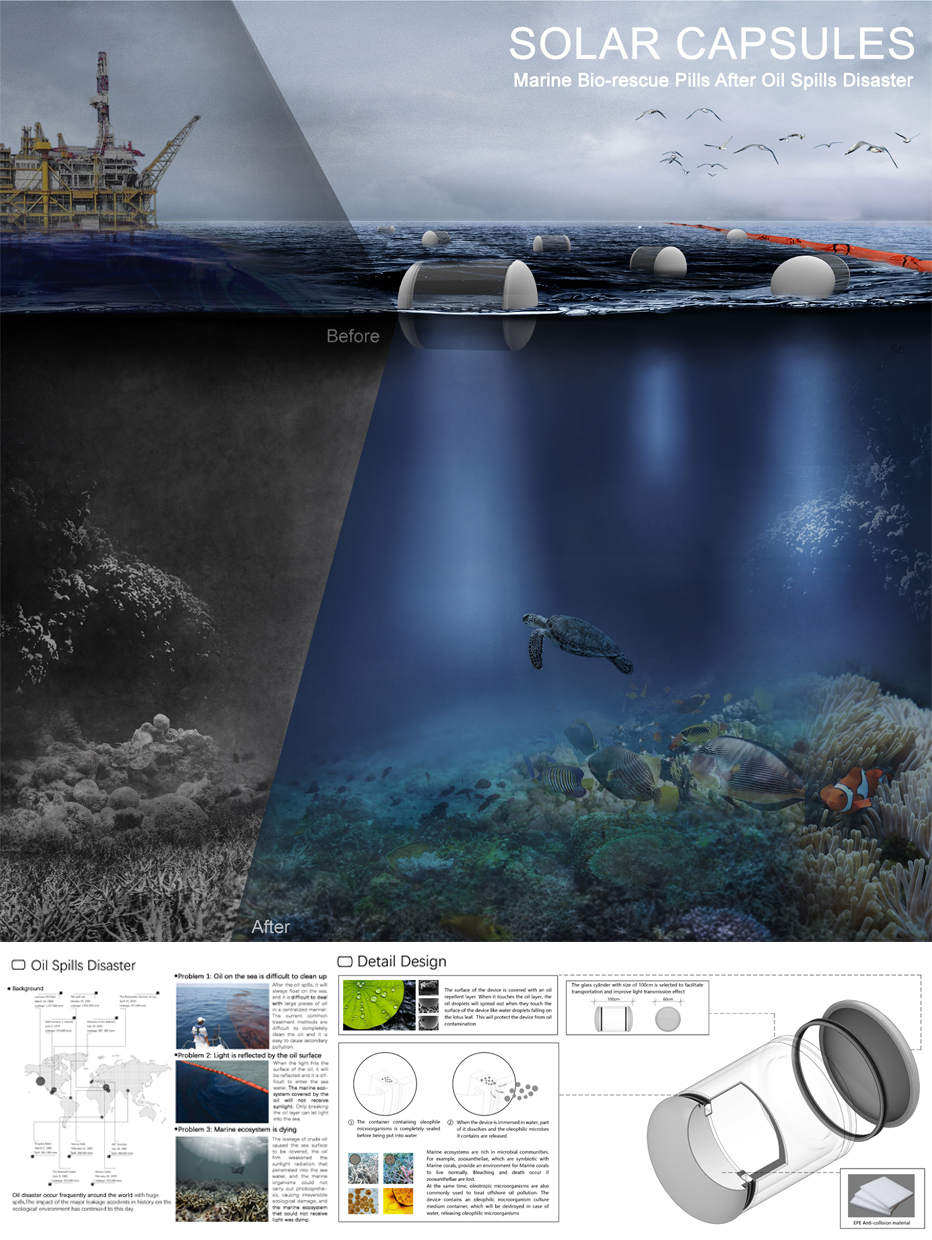Solar Capsules: Marine Bio-rescue pills after oil spills disaster

Category
Daylight investigations - Region 4: Asia and Oceania
Students
Yimeng Wang
Zhongbo Tang
Jiaxing Li
Teacher
Wen Zhang
School
Beijing Jiaotong University
Country
China
Download
Download ↓
Oil spill accidents have been occurring frequently around the world, bringing a huge crisis to the marine ecosystem .Oil pollution prevents sunlight from entering the sea water and the large area of crude oil floating on the sea surface reduces the energy input from solar radiation into sea water, which directly affects the photosynthesis of marine organisms and the cycle of the entire marine food chain, making marine organisms unable to survive due to light. As a result, the normal ecological balance in the marine environment is seriously damaged, not only causing the death of aquatic plants, but also the death of fish and shrimp due to lack of oxygen. The marine ecosystem covered by oil is in an urgent need of rescue. Under the oil disaster, the light can enter the ocean and the plants under the oil film can carry out photosynthesis, which is the starting point of the design of our device. The project breaks the oil interface on the sea surface and introduces light into the sea to save the dying marine ecosystem under the oil cover. The project designed a capsule-shaped light guide device, which can be placed in the oil area controlled by the oil boom through the drone. Because the device’s own buoyancy and Oil-eating material can displace oil on the sea surface, at the same time, sunlight can shine through the device to the ecosystem under the oil surface. In terms of overall device design, it mainly includes three parts, namely the light guide part, the oil-eating microorganism part and the crash pad part. The function of the light guide part is to guide the sunlight below the oil to ensure the lighting needs of the ecosystem. Specifically, it includes:(1) An anti – anti – wing film is coated on the upper surface of the device, which can improve the transmitting of sunlight;(2) A cavity is arranged in the device to realize the floating of the device and reduce the reflection interface to improve the transmittance of the device.(3) The thickness of the upper and lower glass walls of the cavity varies to ensure that the device can be quickly adjusted to the state where the anti-stick coating is facing upwards when the device enters the seawater. Oil-eating microorganisms are arranged at both ends of the glass body, and the oil-eating microorganisms and the culture medium are stored in the annular groove, and are sealed with water-s environmental protection materials. Oil-eating microorganisms are released in seawater and floating to the oil surface to devour oil. The anti-permanent part is at the end of the device, in order to prevent the device from colliding when floating on the sea surface, it plays the role of collision buffer. The whole device is recyclable for multiple applications. After the oil is cleaned up, the device can be recycled and put into the next oil-covered sea area.

































